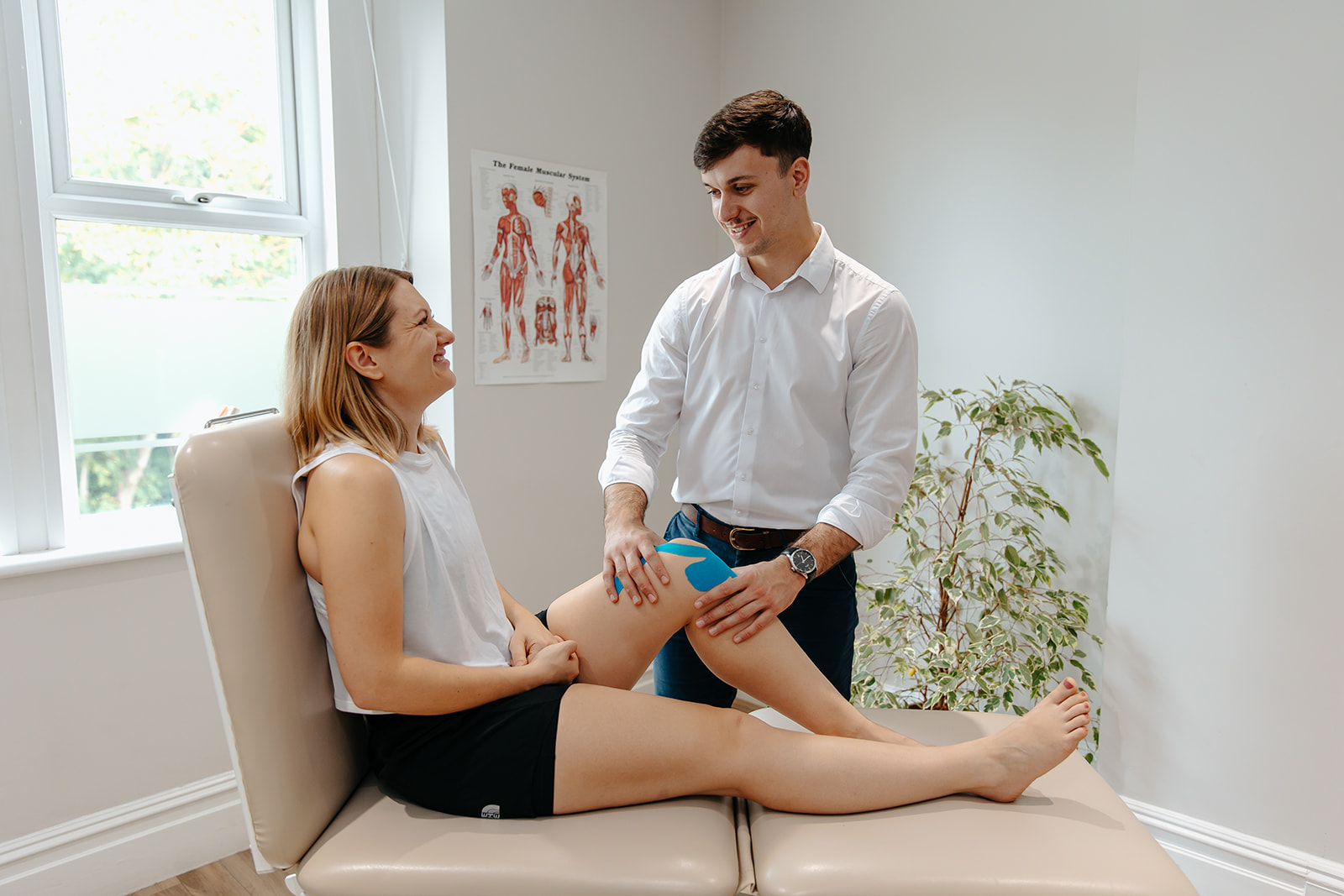What are Sports Injuries?
Sports injuries can happen during any physical activity or sport. It is any pain that stops you from being able to access and play the sports you love.
The most common symptom is pain or difficulty completing tasks required for your sport.
What is the cause?
Many things can cause a sporting injury and many types. Some of these may be:
- Repetitive strain. This is usually through overuse or overloading of the soft tissues (muscles and tendons). Usually, this is either due to an increase in training, an increase in a specific repetitive skill or even a change in equipment/footwear.
- A traumatic strain or muscle tear. This is usually due to a sudden increase in force (e.g. sudden sprinting, sudden stopping, explosive jumping or direct impact) that is above the capacity of your soft tissue to cope with, and so stresses the structures.
- Ligament strains or ruptures. This is usually due to a sudden force pushing your joint past its usual range of movement. For example, this might include: rolling your ankle, direct force to the front of your knee pushing it backwards or falling onto your shoulder.
- The most common injury we see is pain caused by compensatory movement patterns. This usually happens when you are asking your body to do tasks that it is not strong enough to do, trying to move into a range that you are stiff in, or your body does not work together (due to one area being stronger than another). Our bodies will always take the easy option and so compensate for the lack of strength or movement. This leads to repetitive microtrauma, predisposing us to further injuries.
At Hatt’s one of our physiotherapists or podiatrists will be able to assess your injury and movement to diagnose the cause of your pain. Once we know the cause, we can help reduce your pain and then help put in place a management plan to stop it from happening again and get you back to the things you love!
What types of treatment are available?
Treatments will significantly vary depending on your specific injury and needs. However, here are some options that you might expect to see:
- Joint mobilisations to help improve joint movement, reduce stiffness and improve pain.
- Soft tissue works to improve flexibility, stimulate healing and reduce pain.
- Ultrasound to speed up and optimise the healing process.
- Shockwave to speed up and optimise the healing process. This is the goal standard treatment for tendinopathies and repetitive strains.
- Orthotics help improve the function and loading through your foot and therefore leg and body.
- Specific strengthening and rehabilitation programme to get you strong enough to go back to your sport, without putting yourself at risk of further injuries.
The biggest risk factor for injury is going back to sport without having properly managed previous injuries!
If you are having pain or any difficulties with the sports you love, please get in touch on 01380 730473.
